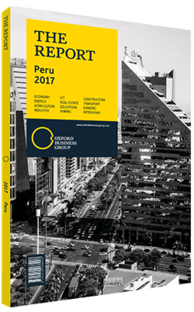Alpacas have a long and storied history, which domestic fabric producers are working to capitalise on
Once considered to be the “fibre of the gods” by the Inca civilisation, alpaca continues to play an important role in the Peruvian economy and culture. The origin of the animal after which the fibre is named has been a matter of disagreement for scientists and historians for hundreds of years. However, the most widely accepted theory is that alpacas are the result of years of hybridisation between other camelid species, specifically vicugnas and guanacos. What researchers agree on today is that vicugna is the most direct wild parent species of today’s animal.
History
Alpacas have been an intrinsic part of Peruvian culture and economy for thousands of years. Although the earliest use of camelid fibre in the county is still uncertain, some studies suggest that it was between 6000 and 7000 years ago.
Evidence shows that approximately 700 years after the first records of alpaca pastoralism, pre-Inca cultures were growing alpacas along the Southern Pacific coast of Peru, as well the Eastern Andean slope. Some centuries later, during the Inca Empire, alpaca acquired special relevance as the Incas regarded it a sacred species, thus becoming more than just a domesticated camelid. In fact, sacrificing an alpaca three times a day was common practice to please the gods.
Furthermore, it was also highly regarded for its meat and as a valued source of fertiliser and fuel. Simultaneously, using alpaca fibre in clothing items became a sign of social status for the empire’s political, religious and economic elite, and only designated weavers were allowed to manufacture alpaca clothing items.
After the Spanish conquest of Peru in 1532, sheep were introduced into the Andes by the colonisers. Due to the limited availability of grazing land, the Spaniards prioritised its use for sheep rather than alpacas. As a result, alpacas became almost entirely a source of meat, despite the superior quality of their fibre, leading to the endangerment of the species. The circumstances pushed some surviving natives – who took their alpacas with them given their lack of difficulties to acclimate to extreme weather conditions – to higher grounds of the Andean mountain range. Three centuries passed before alpaca fleece regained its real value, after British manufacturer Titus Salt rediscovered it in 1836 at a warehouse in Liverpool.
Present Day Use
Contemporary alpacas can be divided into two breeds: huacayas and suris. While the latter breed has a highly lustrous fibre with minimal crimp, it only represents 5% of the world’s alpaca population, due to its vulnerability to extreme weather conditions. The huacaya breed feeds the alpaca textile industry, both in Peru and around the world. In fact, huacaya fleece, which comes naturally in 22 colours, is highly priced and is used to manufacture the finest knitted and woven garments.
Since the industrialisation of alpaca fibre production by Titus Salt, its demand has experienced high and low peaks over the years. What remains the same, however, is the fact that it is considerably warmer and more resistant than sheep wool, and just like sheep wool, it has the ability to repel water and is considered a fire-resistant material. Although the diameter, variety of colours and length of the fibre — the three main factors to determine the quality of a textile fibre — are often compared to cashmere, alpaca fibre production calls for the incorporation of sophisticated technology and know-how that guarantees a higher exportable quality of fibre in larger quantities, as well as the development of its garment industry.
Production & Exports
The global population of alpacas is estimated to be 4m, of which Peru accounts for 87% of the total. According to Peru’s Ministry of Agriculture and Irrigation, Peru is the leading producer of alpaca fibre in the world.
Between January and July 2016 exports of alpaca fibre from the Andean nation totalled $10.5m , while more than 7000 tonnes were exported in 2015 to Asia, the US and Europe, totalling sales of $159m.
You have reached the limit of premium articles you can view for free.
Choose from the options below to purchase print or digital editions of our Reports. You can also purchase a website subscription giving you unlimited access to all of our Reports online for 12 months.
If you have already purchased this Report or have a website subscription, please login to continue.

